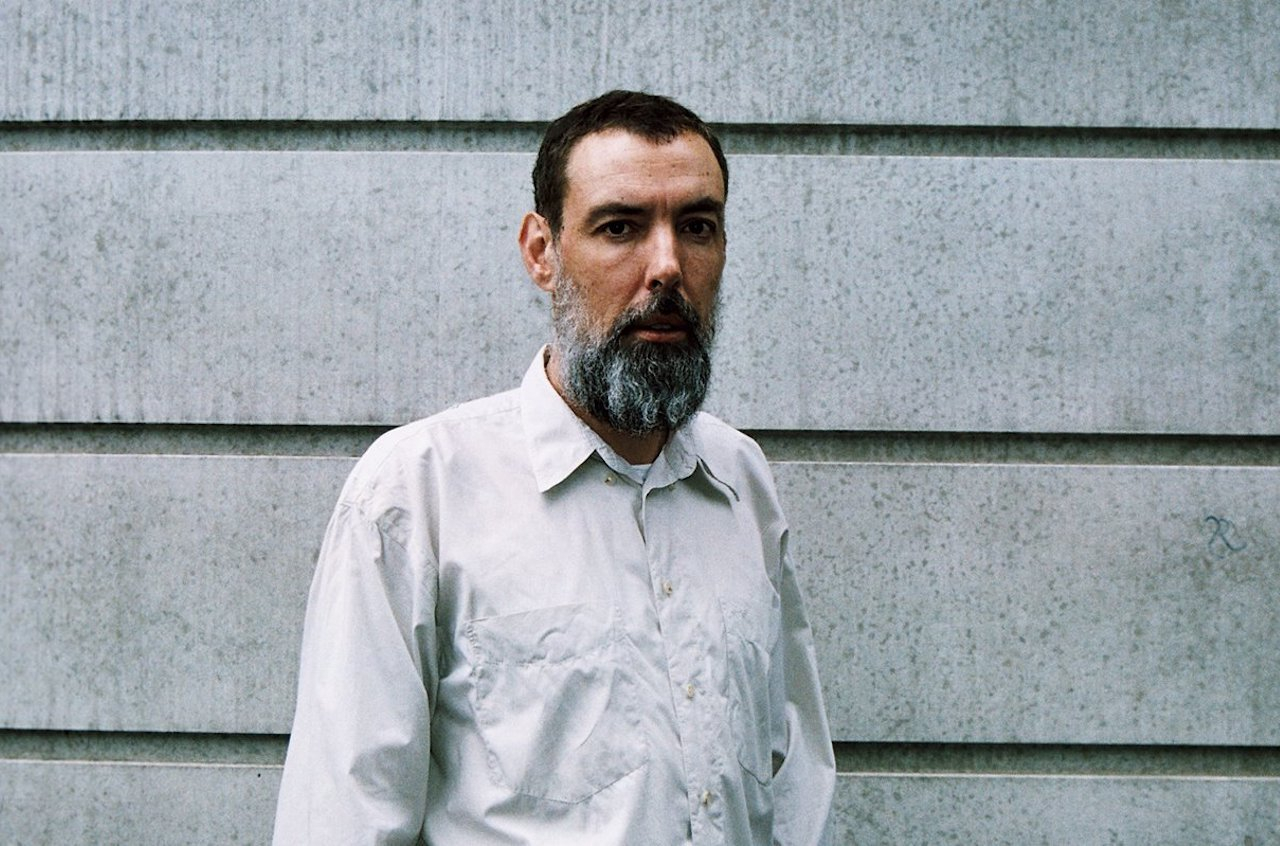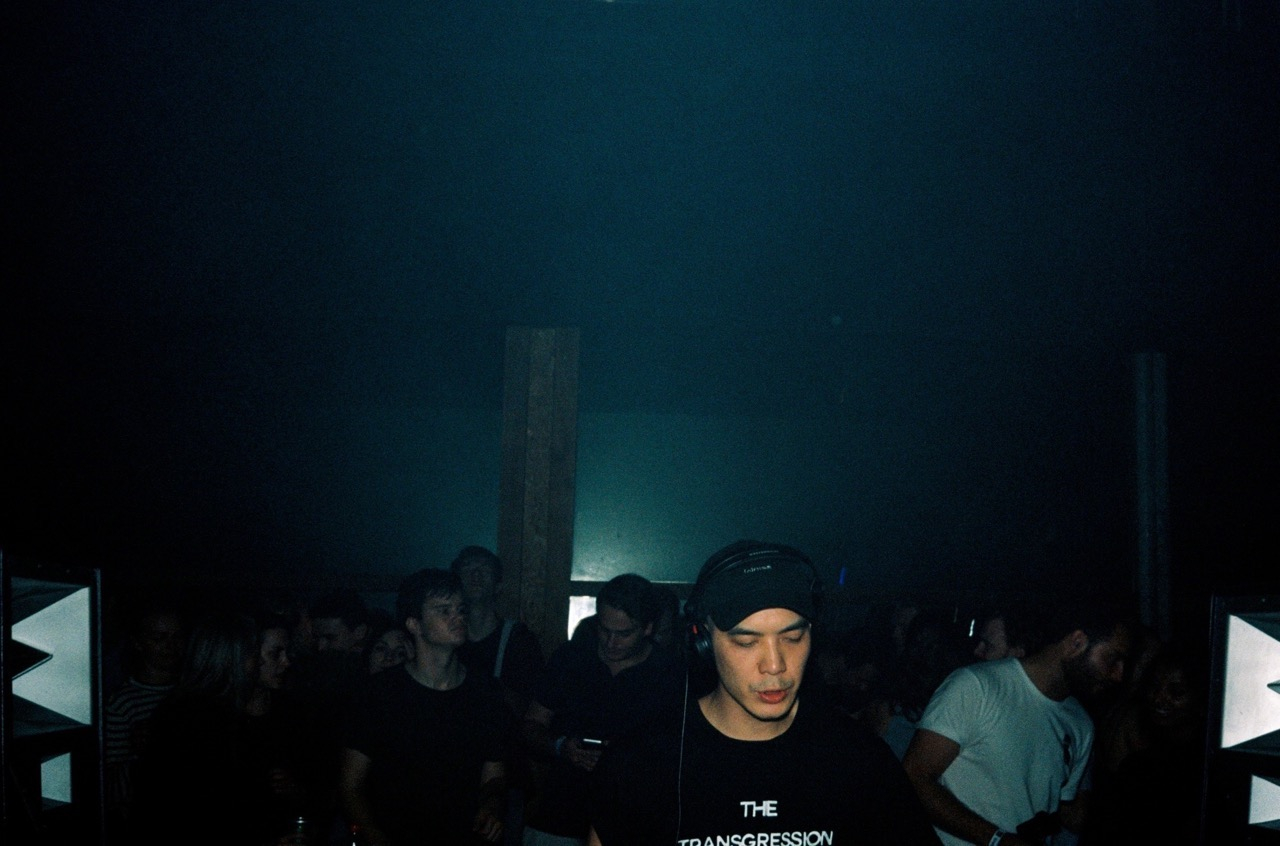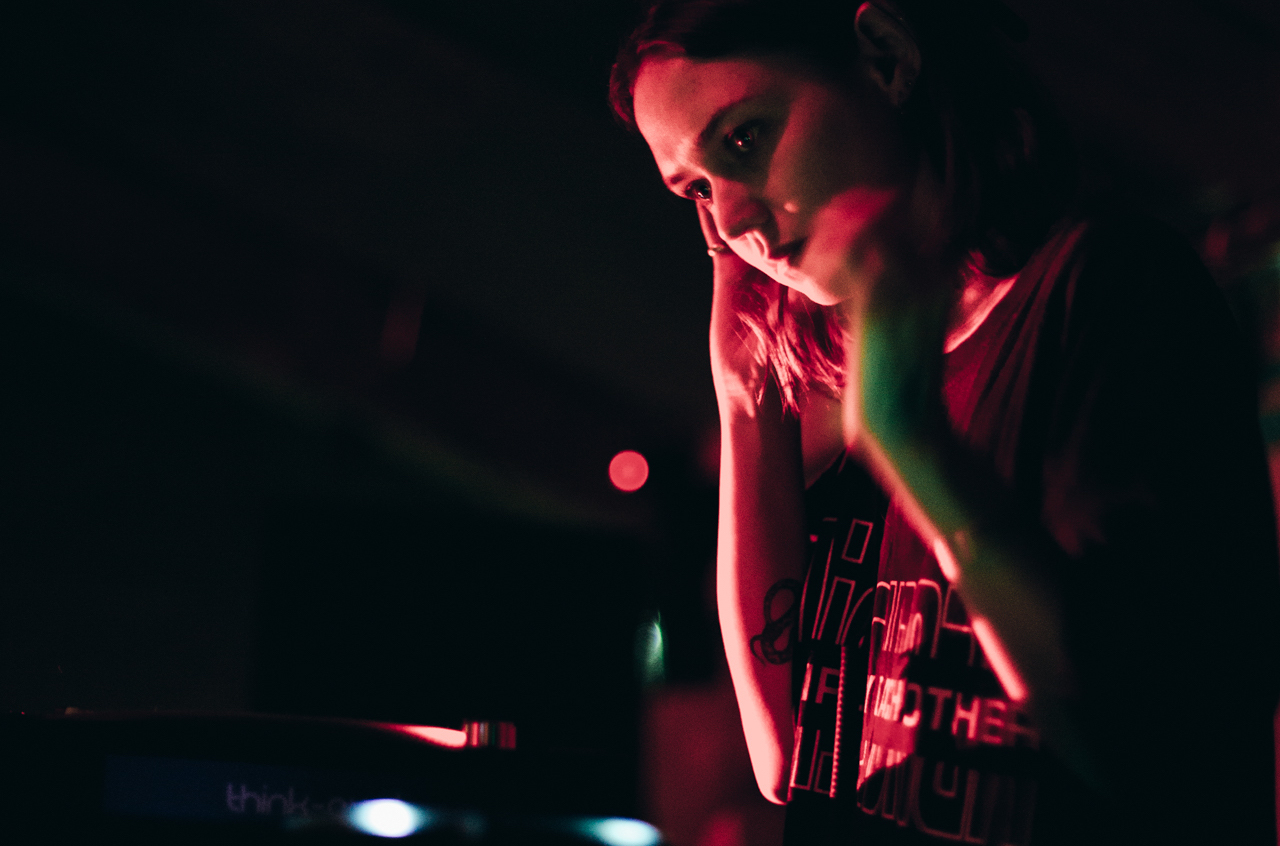- In the FAQs section of the Amsterdam Dance Event website, one statistic gives you a sense of the festival's enormous scale. "Each year, the ADE attracts over 4,500 conference and about 375,000 festival visitors from over 75 countries"—in other words, for a week in mid-October, the city's population grows by about 46%. The vast majority come to party, but many do so anticipating a mix of business and pleasure. On a given day, you can go to gear demonstrations, label pop-ups, music production classes, panel talks, AV installations, documentary screenings or a charity football tournament.
But a lot of that feverish activity can feel incidental when faced with ADE's surplus of great parties. That was especially true of the Thursday night I spent in Oosterbar, a trendy, 180-capacity basement club beneath a youth hostel, formerly the site of a zoological university. Sometime past midnight, as he mixed in a sing-a-long Patrick Cowley track, "Tech-No-Logical World," Josh Cheon, who runs the Dark Entries label, raised one hand in the air and slugged down a beer with the other. The bar was busy and the dance floor full, mostly with people who'd wandered down from their rooms. One of them, his lenses moist and his cheeks flush, began charging around (he'd been marching on the spot earlier). By 1 AM, with the night at its peak, a woman in a sparkly dress was pogoing at the front. Of all the things I'd expected to find at ADE, a sloppy party vibe was the one thing I didn't see coming.
Here are five key performances from across the week.
Ben Frost
Ben Frost and Marcel Weber (AKA MFO) have collaborated for years. Frost's music is deeply affecting no matter what form it takes and Weber is one of the best immersive experience designers around. Their previous show together, A U R O R A, featured a stunning blend of video projections, strobes and inverted video-light scanners. Their new show for Frost's current album was tipped to be just as spectacular.
The chairs had been cleared out of Muziekgebouw's Grote Zaal for Wednesday night's performance, and a screen—not unlike a shower curtain—had been erected onstage. The lights were shut off and the sounds of a bleep test signalled the start. Frost walked on and from a position of serenity unleashed the cataclysmic "Threshold Of Faith." Behind him, the curtain rippled like water. Onto this moving surface, Weber projected images of crashing waves and mesmeric blue mushroom clouds. At other times, lights reflected off the snaking cracks in more of a lava-like motif. Meanwhile, Frost deconstructed the album, a turbulent and beautiful record, sometimes warping its sounds. He pushed the music's dynamics to the extremes: the droning guitar parts rumbled the gut, while the high-ends pierced the skull. There was even some polite heckling. Someone from the audience yelled for more, to which Frost amicably replied "OK," before launching into another of his briny sonic swells. It was a sobering start to a long weekend of partying.
Intergalactic Gary
Shortly before 4 AM on Friday, about an hour into his set, Intergalactic Gary fiddled with a packet of tobacco and rolling papers. As the cigarette began to take shape, his forehead scrunched slightly, and his shoulders, normally stooped over the CDJs, were a little straighter. In the course of his two-hour set, it was the only time he'd shown any sign of exertion. As someone who's been DJing for more than 30 years, Gary, real name John Scheffer, is the epitome of an old pro. He brought that experience to bear at Oosterbar, the site of the Dark Entries and Galactic Funk party on Thursday night. Scheffer's selections were deep and psychedelic, much like Solar's, the DJ he'd followed, but by 3 AM it was clear the night needed a kick. There were fewer people on the dance floor, and the energy of those that stuck around was fading. Scheffer's set was defined by gentle contrasts, where, for example, melodic electro would segue smoothly into modern, Italo-inspired vocal tracks. The musical interplay during these blends was a regular delight. Aside from Leonardo Martelli's "03 23 (Notte)" from the recent Antinote compilation, I didn't recognise much of what he played. Scheffer's patient approach ultimately paid off. From start to finish, I rarely saw anyone leave; most seemed content to sway on the spot, usually with their eyes closed. All the while, Scheffer twisted dials and nudged faders with the impassive expression of someone for whom DJing is a breeze.
Tzusing
Imagine a friend who doesn't like techno, saying things like "it all sounds the same." At a ZeeZout party on Friday at Undercurrent, a spacious quayside club in Amsterdam Noord, I wondered whether Tzusing might be the DJ I'd take that friend to see. Where his music tends towards techno and EBM-inspired slammers, his set in Undercurrent's main room was laced with nods to pop culture. "It goes it goes it goes guilty," a line from from Death Grips' "Guillotine," sprung up in one track. The distinctive gamelan lead from Teriyaki Boyz' "Tokyo Drift" surfaced shortly after. Some lyrics from Ol' Dirty Bastard's "Shimmy Shimmy Ya" featured on a grime instrumental. As Tzusing recently told Andrew Ryce, these samples spoke to a desire to make the music more accessible. In a different setting, one or two tracks might've proved more controversial—I wondered, for instance, how a sample of Evanescence's "Bring Me To Life" might go down with a headsier crowd—but I admired how naturally these selections worked alongside, say, Broken English Club's "Wreck." As much as Tzusing's DJing stems from a people-pleasing approach, he was also pleasing himself. As he mouthed along to Redlight and Ms. Dynamite's "What You Talking About!?," with gunfingers unholstered, a smile began to spread across his face.
Dana Ruh
Dana Ruh's opening slot at RADION, where Resident Advisor hosted a party on Saturday night, was a consummate example of how to gradually build an atmosphere. The set's power came not so much from the tracks—mostly deep house with lots of groove and melody—but from the constant internal shifts that supplied its momentum. From track to track, chords, arps, snares and syllables took turns as Ruh's rhythmic focal points. Small changes had a large impact. A rare vocal track's rhetorical question—"How can you be so dumb?"—repeated the last word, which, as it descended down the scale, acquired a strange musicality. Warm pad harmonies soothed the ears. The first acid line of the night felt genuinely mind-melting. There were no big moments to speak of, but the music never lacked for energy. In time, the dance floor filled up. Seen from the stairs that connected the main room to the bar above, heads bobbed up and down like buoys in the sea. DJ sets are routinely described as journeys, but Ruh created a different sensation—the music, far from sweeping you away, seemed designed to keep you afloat.
Umfang
Umfang's set, also at RA's RADION party, was the most intense I'd come across at ADE. Emma Olson's selections often reminded me of Minimal Nation-era Robert Hood, but the music was rawer and faster. It seldom let up. Chords and bleeps were usually coiled in tight four-bar loops. At one point, the music passed 140 BPM, and rarely dipped far below that. One of the set's few breakdowns came with a siren. Olson's method throughout was strikingly uncomplicated. She played one killer track after another, with a pace and power that seemed to eclipse other DJ sets of hers I'd heard online. In a recent interview with RA, Olson compared music and its absence to light and dark. The techno she played on Saturday felt especially bright, and occasionally blinding.
Photo credits /
Luis Martins - Lead, Dana Ruh, Umfang
Françoise Bolechowski - Ben Frost
Alske Fotografie - Tzusing
Holly Dicker contributed to this piece
 Intergalactic Gary Shortly before 4 AM on Friday, about an hour into his set, Intergalactic Gary fiddled with a packet of tobacco and rolling papers. As the cigarette began to take shape, his forehead scrunched slightly, and his shoulders, normally stooped over the CDJs, were a little straighter. In the course of his two-hour set, it was the only time he'd shown any sign of exertion. As someone who's been DJing for more than 30 years, Gary, real name John Scheffer, is the epitome of an old pro. He brought that experience to bear at Oosterbar, the site of the Dark Entries and Galactic Funk party on Thursday night. Scheffer's selections were deep and psychedelic, much like Solar's, the DJ he'd followed, but by 3 AM it was clear the night needed a kick. There were fewer people on the dance floor, and the energy of those that stuck around was fading. Scheffer's set was defined by gentle contrasts, where, for example, melodic electro would segue smoothly into modern, Italo-inspired vocal tracks. The musical interplay during these blends was a regular delight. Aside from Leonardo Martelli's "03 23 (Notte)" from the recent Antinote compilation, I didn't recognise much of what he played. Scheffer's patient approach ultimately paid off. From start to finish, I rarely saw anyone leave; most seemed content to sway on the spot, usually with their eyes closed. All the while, Scheffer twisted dials and nudged faders with the impassive expression of someone for whom DJing is a breeze.
Intergalactic Gary Shortly before 4 AM on Friday, about an hour into his set, Intergalactic Gary fiddled with a packet of tobacco and rolling papers. As the cigarette began to take shape, his forehead scrunched slightly, and his shoulders, normally stooped over the CDJs, were a little straighter. In the course of his two-hour set, it was the only time he'd shown any sign of exertion. As someone who's been DJing for more than 30 years, Gary, real name John Scheffer, is the epitome of an old pro. He brought that experience to bear at Oosterbar, the site of the Dark Entries and Galactic Funk party on Thursday night. Scheffer's selections were deep and psychedelic, much like Solar's, the DJ he'd followed, but by 3 AM it was clear the night needed a kick. There were fewer people on the dance floor, and the energy of those that stuck around was fading. Scheffer's set was defined by gentle contrasts, where, for example, melodic electro would segue smoothly into modern, Italo-inspired vocal tracks. The musical interplay during these blends was a regular delight. Aside from Leonardo Martelli's "03 23 (Notte)" from the recent Antinote compilation, I didn't recognise much of what he played. Scheffer's patient approach ultimately paid off. From start to finish, I rarely saw anyone leave; most seemed content to sway on the spot, usually with their eyes closed. All the while, Scheffer twisted dials and nudged faders with the impassive expression of someone for whom DJing is a breeze. Tzusing Imagine a friend who doesn't like techno, saying things like "it all sounds the same." At a ZeeZout party on Friday at Undercurrent, a spacious quayside club in Amsterdam Noord, I wondered whether Tzusing might be the DJ I'd take that friend to see. Where his music tends towards techno and EBM-inspired slammers, his set in Undercurrent's main room was laced with nods to pop culture. "It goes it goes it goes guilty," a line from from Death Grips' "Guillotine," sprung up in one track. The distinctive gamelan lead from Teriyaki Boyz' "Tokyo Drift" surfaced shortly after. Some lyrics from Ol' Dirty Bastard's "Shimmy Shimmy Ya" featured on a grime instrumental. As Tzusing recently told Andrew Ryce, these samples spoke to a desire to make the music more accessible. In a different setting, one or two tracks might've proved more controversial—I wondered, for instance, how a sample of Evanescence's "Bring Me To Life" might go down with a headsier crowd—but I admired how naturally these selections worked alongside, say, Broken English Club's "Wreck." As much as Tzusing's DJing stems from a people-pleasing approach, he was also pleasing himself. As he mouthed along to Redlight and Ms. Dynamite's "What You Talking About!?," with gunfingers unholstered, a smile began to spread across his face.
Tzusing Imagine a friend who doesn't like techno, saying things like "it all sounds the same." At a ZeeZout party on Friday at Undercurrent, a spacious quayside club in Amsterdam Noord, I wondered whether Tzusing might be the DJ I'd take that friend to see. Where his music tends towards techno and EBM-inspired slammers, his set in Undercurrent's main room was laced with nods to pop culture. "It goes it goes it goes guilty," a line from from Death Grips' "Guillotine," sprung up in one track. The distinctive gamelan lead from Teriyaki Boyz' "Tokyo Drift" surfaced shortly after. Some lyrics from Ol' Dirty Bastard's "Shimmy Shimmy Ya" featured on a grime instrumental. As Tzusing recently told Andrew Ryce, these samples spoke to a desire to make the music more accessible. In a different setting, one or two tracks might've proved more controversial—I wondered, for instance, how a sample of Evanescence's "Bring Me To Life" might go down with a headsier crowd—but I admired how naturally these selections worked alongside, say, Broken English Club's "Wreck." As much as Tzusing's DJing stems from a people-pleasing approach, he was also pleasing himself. As he mouthed along to Redlight and Ms. Dynamite's "What You Talking About!?," with gunfingers unholstered, a smile began to spread across his face. Dana Ruh Dana Ruh's opening slot at RADION, where Resident Advisor hosted a party on Saturday night, was a consummate example of how to gradually build an atmosphere. The set's power came not so much from the tracks—mostly deep house with lots of groove and melody—but from the constant internal shifts that supplied its momentum. From track to track, chords, arps, snares and syllables took turns as Ruh's rhythmic focal points. Small changes had a large impact. A rare vocal track's rhetorical question—"How can you be so dumb?"—repeated the last word, which, as it descended down the scale, acquired a strange musicality. Warm pad harmonies soothed the ears. The first acid line of the night felt genuinely mind-melting. There were no big moments to speak of, but the music never lacked for energy. In time, the dance floor filled up. Seen from the stairs that connected the main room to the bar above, heads bobbed up and down like buoys in the sea. DJ sets are routinely described as journeys, but Ruh created a different sensation—the music, far from sweeping you away, seemed designed to keep you afloat.
Dana Ruh Dana Ruh's opening slot at RADION, where Resident Advisor hosted a party on Saturday night, was a consummate example of how to gradually build an atmosphere. The set's power came not so much from the tracks—mostly deep house with lots of groove and melody—but from the constant internal shifts that supplied its momentum. From track to track, chords, arps, snares and syllables took turns as Ruh's rhythmic focal points. Small changes had a large impact. A rare vocal track's rhetorical question—"How can you be so dumb?"—repeated the last word, which, as it descended down the scale, acquired a strange musicality. Warm pad harmonies soothed the ears. The first acid line of the night felt genuinely mind-melting. There were no big moments to speak of, but the music never lacked for energy. In time, the dance floor filled up. Seen from the stairs that connected the main room to the bar above, heads bobbed up and down like buoys in the sea. DJ sets are routinely described as journeys, but Ruh created a different sensation—the music, far from sweeping you away, seemed designed to keep you afloat. Umfang Umfang's set, also at RA's RADION party, was the most intense I'd come across at ADE. Emma Olson's selections often reminded me of Minimal Nation-era Robert Hood, but the music was rawer and faster. It seldom let up. Chords and bleeps were usually coiled in tight four-bar loops. At one point, the music passed 140 BPM, and rarely dipped far below that. One of the set's few breakdowns came with a siren. Olson's method throughout was strikingly uncomplicated. She played one killer track after another, with a pace and power that seemed to eclipse other DJ sets of hers I'd heard online. In a recent interview with RA, Olson compared music and its absence to light and dark. The techno she played on Saturday felt especially bright, and occasionally blinding. Photo credits / Luis Martins - Lead, Dana Ruh, Umfang Françoise Bolechowski - Ben Frost Alske Fotografie - Tzusing Holly Dicker contributed to this piece
Umfang Umfang's set, also at RA's RADION party, was the most intense I'd come across at ADE. Emma Olson's selections often reminded me of Minimal Nation-era Robert Hood, but the music was rawer and faster. It seldom let up. Chords and bleeps were usually coiled in tight four-bar loops. At one point, the music passed 140 BPM, and rarely dipped far below that. One of the set's few breakdowns came with a siren. Olson's method throughout was strikingly uncomplicated. She played one killer track after another, with a pace and power that seemed to eclipse other DJ sets of hers I'd heard online. In a recent interview with RA, Olson compared music and its absence to light and dark. The techno she played on Saturday felt especially bright, and occasionally blinding. Photo credits / Luis Martins - Lead, Dana Ruh, Umfang Françoise Bolechowski - Ben Frost Alske Fotografie - Tzusing Holly Dicker contributed to this piece